The Sutra AI Platform, developed by Adnexus Biotechnologies, the Sutra AI Platform revolutionizes pandemic response by effectively addressing critical delays in detection, drug development, and deployment—phases where conventional timelines (6 months, over 10 years, and 2 years, respectively) often prove inadequate during crises.
By incorporating AI-driven tools, genomic surveillance, and strategic collaborations, Sutra significantly reduces these timelines, providing a proactive and crisis-ready solution to emerging health threats.

The Urgent Need for Speed
The World Health Organization (WHO) warned on March 3, 2025, that there is a 20-40% chance of a new pandemic within the next decade.

"The risk of a pandemic is not a distant possibility but a looming certainty; history teaches us that pathogens evolve faster than our complacency can keep pace."
— Dr. Tedros Adhanom Ghebreyesus, WHO Director-General
Transforming Pandemic Response
Traditional detection lags by 6 months, but using genomic surveillance and predictive analytics, Sutra AI reduces this by 90%. Targeting conserved viral sites identifies emerging threats in real time, enabling swift diagnostics (Adnexus Biotechnologies, 2025).
Drug discovery typically takes over a decade. Sutra AI reduces this timeline to 1-3 years by utilizing structure prediction, an 8-million-molecule library, and drug repurposing (e.g., identifying Trapicolast). Candidates are identified in days, not years, revolutionizing R&D efficiency (Adnexus Biotechnologies, 2025).
Deployment traditionally takes 2 years, but Sutra AI streamlines this to under a year. Prognostic AI optimizes clinical trials, while scalable manufacturing ensures rapid rollout—delivering solutions when needed (Adnexus Biotechnologies, 2025).
At a Glance: Sutra AI’s Impact
-
70% faster pandemic response compared to traditional methods.
-
Unique Advantage Targets conserved viral sites for broad-spectrum solutions, effective against diverse pathogens.WHO Alignment Addresses the 2024 Priority Pathogens list, including Nipah (Henipavirus), Ebola (Filoviridae), Monkeypox (Poxviridae), Influenza (Orthomyxoviridae), and Enterovirus, using family-focused diagnostics (WHO, 2024).
Workflow Example: Containing a potential virus Outbreak

Addressing WHO’s 2024 Priority Pathogens
- Ready for Emerging Threats
- WHO’s July 2024 list shifts to a family-focused approach with Prototype Pathogens and Pathogen X (Le infezioni in Medicine).
- Sutra AI Targets: Nipah (Henipavirus), Ebola (Filoviridae), Monkeypox (Poxviridae), Influenza (Orthomyxoviridae), Enterovirus.
- Diagnostics Role: Develop assays for conserved targets across these families.
- "A proactive step mirroring global health preparedness." – WHO 2024 Update
Conclusion
Sutra AI significantly redefines pandemic preparedness by reducing timelines, proactively identifying threats, and aligning with global health requirements. In an era where pathogens evolve at a pace surpassing our complacency, Sutra provides a transformative solution, as the next crisis will not await our actions.
References
-
IMF. (2021)
COVID-19 Economic Cost Assessment.
-
Le Infezioni in Medicina. (2024)
WHO Priority Pathogens Update.
-
WHO. (2024)
February 2024 Nipah Outbreak Report; July 2024 Priority Pathogens List.
-
WHO. (2025)
Pandemic Risk Assessment, March 3, 2025




 Sutra 2025. All Rights Reserved.
Sutra 2025. All Rights Reserved.
